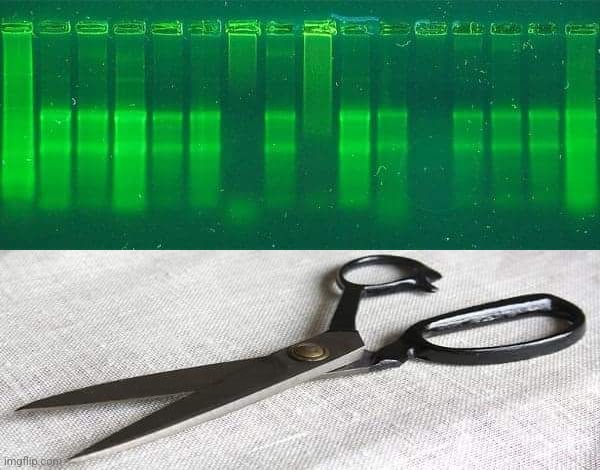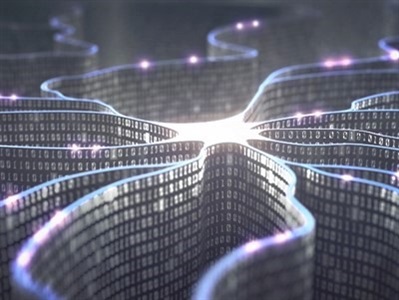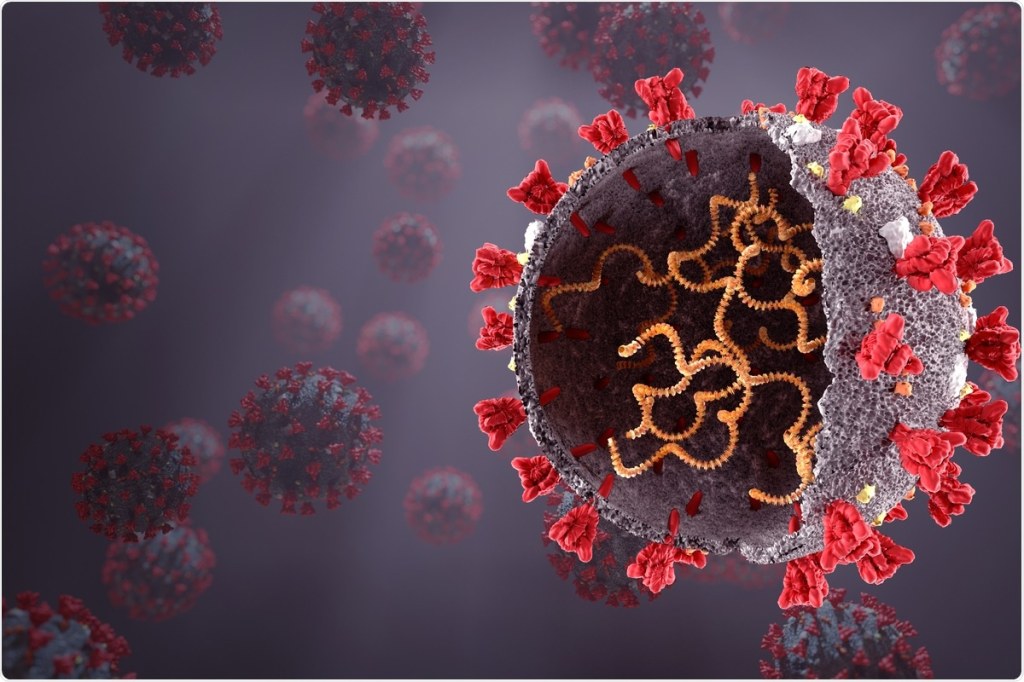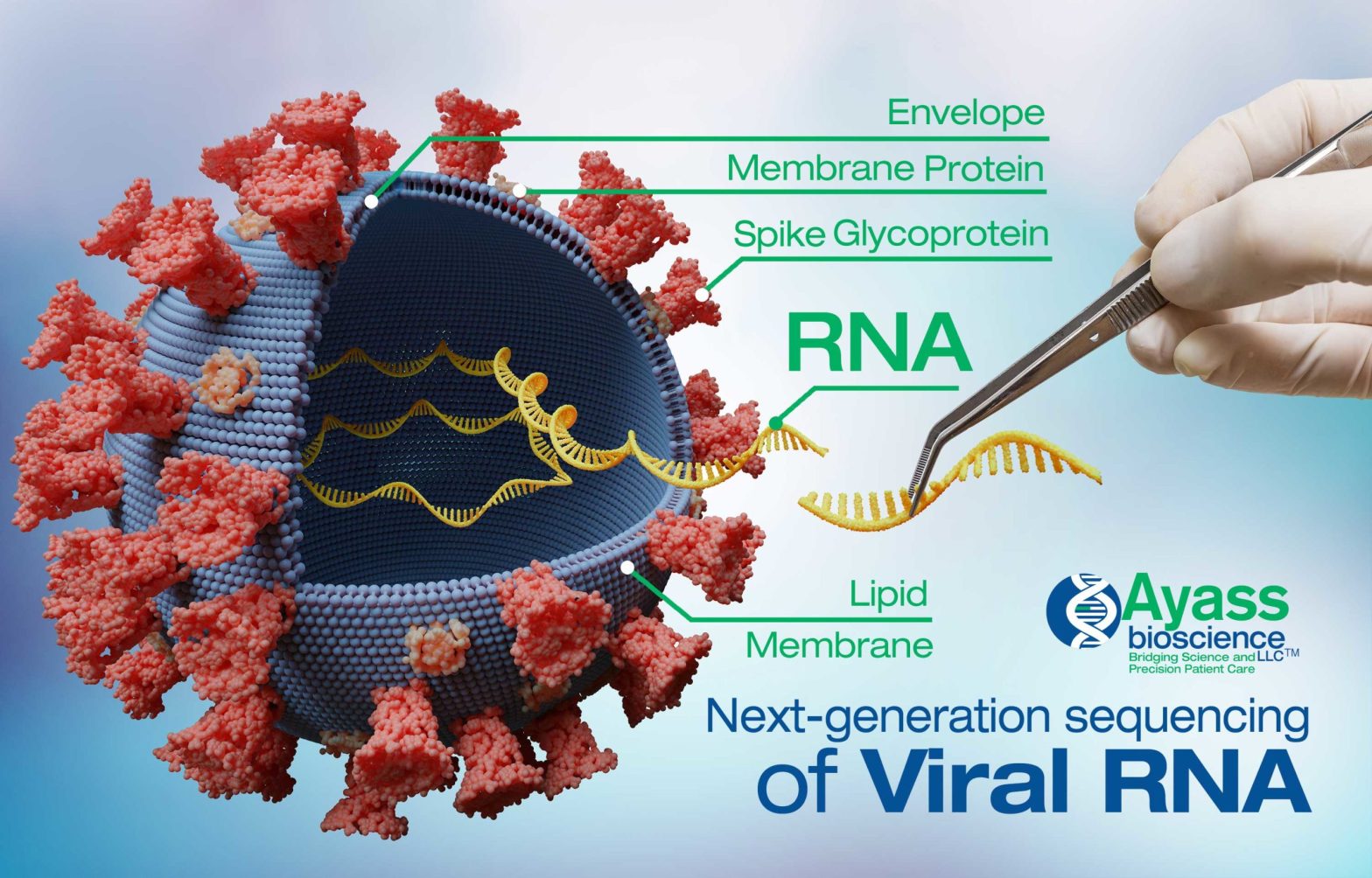I’ve come across quite a few people who seem to believe that the existence of “viral” genomes and “viral” RNA or DNA sequences somehow proves the existence of “viruses.” One person even believed that the genome was a representation of purified/isolated “viruses.” Disregarding the fact that random A,C,T,G’s that exist only inside a computer database is at best INDIRECT evidence (does not prove; only allows for inference), there is no DIRECT evidence of a PHYSICAL entity called a “virus.” The genomes said to belong to “viruses” are never sequenced from purified/isolated particles taken from the samples directly from a sick person. They are either sequenced from unpurified bodily fluids containing many sources of host and other “non-viral” microorganisms or they are taken from unpurified cell cultures which contain numerous sources of foreign contaminants.
Purification and isolation are two criteria that must be satisfied first before any particles claimed as a “virus” can be said to actually exist and before any genome could theoretically be considered valid evidence. Remember the definitions for purification/isolation:
Purification
- to make pure; free from anything that debases, pollutes, adulterates, or contaminates:
- to free from foreign, extraneous, or objectionable elements:
https://www.dictionary.com/browse/purification
Isolation
the act of separating something from other things: the act of isolating something
https://www.merriam-webster.com/dictionary/isolation
However, the CDC knows that the purification and isolation of “viruses” directly from human samples is impossible:

When you break down the steps for sequencing a genome, you will realize that there is absolutely no way that this process can be said to fulfill these two basic criteria, starting with the very cell culture process used to get the sample for sequencing. Thus it must be understood that no matter what process is used, no “viral” genome ever comes from anything that has been proven to exist physically in an isolated state. It is always assumed that the “virus” is hiding within the mixed fluids/culture and that it can be broken down into pieces and put back together again from within a mixed soup.
Charting the Course
Previously, I detailed the various steps that are used to create a “viral” genome. As there are different ways to sequence a genome, I followed the blueprint set forth by the CDC in the image below.

In this post, I have broken it down into the main steps from the image and provided a brief summary for each one. I included the different ways in which each step can be contaminated and/or introduce errors that are further propagated into the final product. I also included links to articles I did focusing specifically on each step, providing further details to help flesh this process out. At the end are a few important links to articles exposing the inaccuracy and inability to reproduce genomes as well as the fact that genomics fails as a science. My hope is that this serves as a guide to understanding this complex process as well as evidence for why “viral” genomes can never stand as valid evidence for an entity never shown to physically exist in the first place.
“Viral” Cell Culture:

In order to get enough RNA/DNA needed to sequence a “virus,” the sample taken from a sick person is usually cultured first. Why do they do this? Because, as the CDC stated, purification is not possible as there is not enough “virus” within the bodily fluids of a human so more “virus” must be grown by adding it to a cell culture first. Keep in mind that the original “SARS-COV-2” genome was supposedly sequenced straight from the unpurified broncoalveloar fluid of one patient without cell culturing first. Somehow, there was enough “virus” in the fluids to sequence a genome but not enough to purify and isolate the particles said to be “viruses” beforehand.
Regardless of the above blatant contradiction, the cell culture process used by the CDC consists of taking the unpurified sample, subjecting it to “viral” transport media, and adding the mixture to either human cancer or animal cells. This concoction has further substances added to it such as fetal bovine serum, antibiotics/antifungals, DMEM, “nurtrients,” etc. There are numerous sources of contamination which they admit can only be mitigated at best, not eliminated. The added chemicals can lead to changes in gene expression, characterization, and genomic instability. The stress from the culture process itself can alter the cells and the final product. There are also problems with cell-line misidentification and reproducibility.
For a breakdown of the numerous problems inherent with this cell culture process, read the post below:
THE CASE AGAINST CELL CULTURES
Step 1. Extracting RNA

This initial step after cell culturing utilizes various methods to attempt to “purify” RNA from the cell culture supernatant. The methods used for extraction consist of chemical and physical means. They are:
- The phenol/chloroform method
- The spin column/column chromatography method
- The magnetic beads method
It is important to understand that through this process, they are not separating whole “viral” particles from everything else. They are breaking down all of the substances within the sample into RNA by either physical or chemical processes in order to establish a DNA library for genome sequencing. This means that “purifying” RNA is not “purifying” particles said to be “virus.” It is essentially a pool of RNA created from a mixed population of genetic material from many different sources. All of the methods used for extracting the RNA have their own drawbacks and contamination is a guarantee as well as the possibility of RNA degradation. Any errors in this first crucial step will affect the following steps in the sequencing process and lead to problems with the reliability and accuracy of sequencing a genome.
THE CHALLENGES RELATED TO RNA EXTRACTION FOR GENOME SEQUENCING
Step 2. DNA/RNA Shearing/Fragmentation

The next step consists of breaking the RNA into fragments. This is done as the sequencing technology is based on cutting DNA into small fragments and performing massive parallel sequencing. The multiple overlapping segments termed “reads” are then assembled using computer algorithms and consensus into a contiguous sequence. This fragmentation step can be done either before or after converting the RNA into cDNA for library preparation. The main methods used for RNA fragmentation include using metal ions or using RNase III. These two methods can introduce bias, RNA degradation, and contamination. After conversion to cDNA, methods used for fragmenting include:
- Enzyme-based treatments
- Acoustic shearing
- Sonication
- Centrifugal shearing
- Point-sink shearing
- Needle shearing
As with the previous RNA shearing methods, contamination, sequencing errors, bias, degradation, and loss of sample can and do occur with these DNA shearing practices. The size of the fragments needed are dependent on the technology that is selected and used. If any problems arise during fragmentation, these errors will be propagated and compounded down the line into the final genome.
DNA AND RNA SHEARING/FRAGMENTATION
Step 3. Converting RNA into cDNA

It is claimed that RNA is highly unstable and as the PCR process used to create the sequencing library can only use DNA, there is an added step of converting the RNA into the more stable complementary DNA, or cDNA, for “viral” sequencing. The theory to explain cDNA relies heavily on the “virus” fraud as the only way for cDNA to exist is either through the use of reverse transcriptase, an enzyme created through the “natural” processes of “retroviruses” as they hijack host cells or as synthetically engineered DNA in a lab using the synthetically created reverse transcriptase. The conversion of RNA to cDNA in order to generate a sequencing library is as fraught with issues relating to contamination, biases, artifact creation, sequencing errors, false-results, etc. as are the prior steps related to “purification” and fragmentation of the RNA. This is primarily due to the error-prone process called Reverse Transcription (RT) PCR. These errors can then be further propagated into the final product. Seeing a theme yet?
THE HYPOTHETICAL CONVERSION OF RNA INTO cDNA
For more information on the various problems with PCR amplification and contamination, please see this article:
PCR CONTAMINATION AND LIMITATIONS
Step 4. Library Construction

After extracting the RNA, fragmenting it, and converting it into cDNA, the sequencing library must be prepared. The library is essentially just a set of DNA fragments used for sequencing. The steps listed previously are used to prepare the library and once this is done, the library is loaded into a DNA sequencer to create “reads.” As stated before, the process of generating this library is rampant with contamination, batch errors, sequencing errors, biases, etc. They openly admit that bias can not be eliminated and can only be mitigated and that batch effects are inevitable with no way to detect or remove them.
THE CHALLENGES IN GENOME LIBRARY CONSTRUCTION
Step 5. DNA Sequence Analysis

Now that the library has been prepped and loaded into the sequencer, the sequencer produces millions of DNA reads and specialized computer programs put them together. They commonly refer to this part of the process as putting together a jigsaw puzzle. Granted, it is done by automated algorithms. However, if you have incorrect pieces due to contamination, bias, batch errors, degraded RNA, low quality DNA, sequencing errors, etc. from the proceeding steps, how accurate will the picture truly be?
Keep in mind that the technology used to sequence the data has limitations/drawbacks as well. The fact is that the creation of a “viral” genome is heavily dependent upon continually outdated technology in constant need of refinement to ensure an “accurate” end product. The popular and most widely used Illumina sequencer has issues with GC content bias, substitution errors, low sequence diversity, read length limitations, and technical problems related to reproducibility. Thus, the “accuracy” of any genome is limited by the technology of the time.
LIMITATIONS IN GENOME SEQUENCING TECHNOLOGY AND DATA ANALYSIS

It should be apparent that the existence of a genome is not proof of a purified/isolated “virus.” There are far too many issues throughout the sequencing process such as:
- The contamination/reproducibility issues with the initial cell culturing process
- The contamination/biases/errors which occur during the extraction/fragmentation/conversion of RNA to cDNA
- The OVERALL contamination/batch errors/artefacts which are inevitable in the library preparation
- The technological limitations and reproducibilty issues with the sequencing technology
There is no area of the genome sequencing process that is untouched by serious problems which affect the end result. This laundry list of common and unavoidable pitfalls should make anyone question the overall outcome of any genome sequenced, especially ones that do not come from physical particles ever free from contamination/foreign material nor separated from everything else being sequenced. The particles said to be “viruses” are only ASSUMED to be there. The “viral” RNA is only ASSUMED to be ‘viral” based on sequences from reference genomes previously created without purified/isolated “viruses” using older technology with even more technological issues and limitations.
Next time you hear about a more dangerous variant, just remember the numerous issues outlined above as well as the fact that the WHO admits that the initial cell culturing step leads to mutations and variants in genomes and should be avoided:
“Levels high following culture, but culture may induce artificial variants”
“For samples with a low viral load, the proportion of viral genetic material can theoretically be increased by allowing the virus to replicate in cell culture. However, the biosafety risks associated with virus culture are significantly higher than those associated with uncultured clinical samples. Biosafety level 3 facilities are required, with extensive additional procedures to ensure safe handling and storage. In addition, passage in cell culture can result in artificial
mutations in the sequences, which were not present in the original clinical sample. This can have major implications for subsequent analyses. Using cell culture solely for the purpose of amplifying virus genetic material for SARS-CoV-2 sequencing should therefore be avoided, especially now that other bait-capture and amplicon-based approaches are available to improve sequencing sensitivity.”
https://apps.who.int/iris/rest/bitstreams/1326052/retrieve

Other things to keep in mind:
- HOW ACCURATE AND RELIABLE ARE GENOMES?
- The accuracy and reliability of any genome is questionable as they are considered a continual “work in progress.”
- GENOME CONTAMINATION: A WIDESPREAD PROBLEM
- Most clinical specimens and tissue culture samples to be used for “viral” genome sequencing are usually contaminated with human cells, other microorganisms and naked DNA and RNA from disrupted cells.
- THE REPRODUCIBILITY CRISIS IN GENOMICS
- Genomics is primarily a computationally data-driven “science” and it requires that the technology, software, and data generated are accurate and easily accessible to other researchers in order to reproduce and confirm the findings. However, the ability to generate data has surpassed the technology as well as the ability to store and interpret the massive amounts of data generated. These results from genomic studies are rarely, if ever, reproduced.
- THE EPISTEMOLOGICAL CRISIS IN GENOMICS
- Genomics is not science but is instead driven by statistics. The collection, interpretation, and analysis of data is not science. Genomics does not observe a natural phenomenon and create experiments using valid independent and dependent variables in order to determine cause and effect. It creates an artificial phenomena in a lab using questionable technology. It is concerned with the generation of massive amounts of data and the subjective determination and analysis of that data.
It’s obvious if you look at the genome sequencing process from start to finish both critically and logically, not only can a genome not be considered DIRECT evidence for a purified/isolated “virus,” it can not count as INDIRECT evidence either.


Mike where can I find the material relevant to “One person even believed that the genome was a representation of purified/isolated viruses?” Thanks.
LikeLiked by 1 person
This may sound harsh but it was no one of importance. It was someone I “debated” over a few posts in Facebook. I use the term loosely as all he did was throw out ad hom attacks and memes. It was his assistance that genomes were proof of purified/isolated “viruses” that really drove me into researching the process in more detail. It was a ridiculous claim that he kept repeating over and over again.
LikeLike
funny how these folks we debate online can be our best teachers, pushing us into deeper research!
LikeLiked by 1 person
Yes, I have found that to be the case. There is one girl who is a microbiologist who I used to converse (or debate) with. She was very technical and always linked manuals. It actually helped me to learn to counter what she was stating. Her attempts to debunk me helped me to debunk her. 😉
LikeLike
Wow, this is a masterful summary …. “the case against”…. bravo! I hope Cowan uses it in one of his videos! It’s so well organized, step by step….
LikeLiked by 2 people
Thank you! Dr. Cowan has done a masterful job already debunking genomes. I doubt he needs my help but I’m always flattered when he “borrows without express permission.” 😉
LikeLiked by 1 person
Great synopsis. When I see the term “automated algorithms”, I begin to think that you cannot take the “human” part of of the equation. Humans contaminate everything they touch. The question becomes how to view nature without disturbing it. It would not surprise me to discover the whole RNA/DNA hubbub is mostly computer simulation and like A/I is only as good as the inputs. Perhaps, unless exact statistics are being computed, neither man nor computer can replace exactness and purity.
LikeLiked by 1 person
I lean towards the RNA/DNA being just a fraudulent as “viruses.” The science behind genomics is just as faulty. When you subject a sample to so many processes, there is no way to control all of the different variables and eliminate all sources of errors and contamination. There is no way the results can be trusted.
LikeLike
I will never forget in March 2020 when I put, “Velvet by Illumina” into a Google search after reading David Crowe’s paper on PCR. All i could do was visualize a rabbit being pulled out of a hat.
LikeLiked by 1 person
That’s an apt description. Nothing but tricks designed to deceive. David’s paper was ahead of its time.
LikeLiked by 1 person
Reblogged this on Snooze 2 Awaken.
LikeLiked by 1 person
Detailed article Thanks.
I add a few links how some of the concepts came about and how they just fabricate virus and make up theories of diseases and their causes as they go along.
What these so called ‘scientists’ claim to be doing defies the rules of thought and logic. It is a race for money and glory .
https://media2-production.mightynetworks.com/asset/37732524/Dr._Stefan_Lanka_-_Genetics_Lie___Genetic_material_in_dissolution_.pdf?_gl=1*1il4c2a*_ga*MTIzMTkzOTQ4OC4xNjI1NzM1OTcw*_ga_T49FMYQ9FZ*MTY0OTI4MDY2Mi44NTQuMS4xNjQ5MjgzMzAwLjA.
LikeLiked by 1 person
New try with a link in the previous post
https://media2-production.mightynetworks.com/asset/37734062/Harald_zur_Hausen.pdf?_gl=1*k8rysr*_ga*MTIzMTkzOTQ4OC4xNjI1NzM1OTcw*_ga_T49FMYQ9FZ*MTY0OTI4NTY3OC44NTUuMS4xNjQ5Mjg1Njg3LjA.
LikeLiked by 1 person
There is not a single direct proof that the so-called nucleic acid molecules and the so-called molecules that make them up really exist. The same is true for hypothetical proteins made up of hypothetical amino acids. No one has ever isolated, purified, or visualized any submicroscopic particle of nucleic acid. No one has ever isolated, purified, or visualized any submicroscopic particle that is claimed to be part of a so-called nucleic acid molecule. No one has ever isolated, purified and visualized any protein or amino acid. No one has ever isolated, purified, or visualized any hypothetical submicroscopic particle called a hormone or any hypothetical submicroscopic particle called an antibody. In addition, electron microscopy is just an extremely harmful laboratory procedure for biological material and whose micrographs are beyond the comprehension of so-called researchers, for the simple reason that they do not have the technological capabilities to see how energy is structured beyond field of visibility. In reality, all the supposedly scientific explanations related to the hypothetical sub-microscopic particles have nothing to do with the proven reality but remain eternal only at the stage of assumptions, even if they are presented to us as indisputable truths.
LikeLiked by 1 person
Wonderfully said and I couldn’t agree more 👏
LikeLike
Hi Mike.
May find this interesting .The obvious contradictions.
Astonishing what the so called ‘scientist’ can come up with.
https://media2-production.mightynetworks.com/asset/40006926/All_Gene_Ideas_Refuted__in_2000.pdf?_gl=1*qyqcqd*_ga*MTIzMTkzOTQ4OC4xNjI1NzM1OTcw*_ga_T49FMYQ9FZ*MTY1Mzg2MjkzOC45NzYuMS4xNjUzODY1Mjg5LjA.
LikeLiked by 1 person
Awesome! Thanks for the info. 🙂
LikeLike
There was a good video on Immanuel Project. No English Version , a rough attempt , a tricky v as packed with information .
“ The question – Why is the genome a mutation when it was build according to a template of an old virus?
Because the final product never matches 100% with the model. In places where it does not fit is seen as mutations.
How consensus was established
-a diagnostic PCR was developed
(the test is looking actually for human nucleic acids ( so inappropriate for diagnosis and susceptible to false results)
-‘Shockingly ‘they found many positive results suggest spread of the infection -they were in reality not looking for anything unusual that does not exist in nature.
The alignment was never confirmed via control experiments but are just unscientific theories.”
https://media2-production.mightynetworks.com/asset/42814420/Virus_mutation___the_misinterpretation_of_a_misinterpretation.pdf?_gl=1*a2xnrd*_ga*MTIzMTkzOTQ4OC4xNjI1NzM1OTcw*_ga_T49FMYQ9FZ*MTY1ODYwODE0Ni4xMTMzLjEuMTY1ODYwODE3MS4w
LikeLiked by 1 person
Alwo check out the 30 minutes video how they fabricated SARS Cov-2
https://t.me/Corona_Fakten/1051
LikeLike
Have you tried doing a BLAST search for a single raw read of the SARS 2 genome? For example you can go to the end of this paper: https://www.ncbi.nlm.nih.gov/pmc/articles/PMC7409862/. Click on “SRR12109250” under “Data availability”. Click on “SRR12109250” again, click on “Reads”, and copy the nucleotide sequence of the first raw read: “gttgtacttc gttcagttac gtattgctaa ggttaagact actctgcctt tgaacagcac cttcatcaga ttcagcttgc atggcattgt tagtagcctt atttaaggct cacctcagct tacctcctca tgtttaaggt aaacgatggc tgcattaacc actgttggtt ttaccttttt agcttcttcc acaatgtctg catttttaat gtatgcattg tcattagttt taataaccac cactaaaact attcacttta atgaat”. Then paste the sequence to the “Enter Query Sequence” field in nucleotide BLAST: https://blast.ncbi.nlm.nih.gov/Blast.cgi?PROGRAM=blastn. Then when you click on the BLAST button, you’ll see that the best match for the sequence is a genome of SARS 2. So if the sequence of the raw read actually comes from a contaminant, then why is the contaminant not the best match? And we’re working on the level of raw reads, so alignment and variant calling do not yet come into play.
You can also try to assemble the raw reads yourself. Open the URL in my previous paragraph again, click on “SRR12109250” under “Data availability” again, click on “SRR12109250”, click on “FASTA/FASTQ download”, and press the “FASTQ” button under “Download”. Then open this online interface for assembling the raw reads: https://ngdc.cncb.ac.cn/ncov/online/tool/variation?lang=en. Press the “Choose File” button under “Upload FASTQ Files” (and not under “Upload Reference FASTA”), select the file you just downloaded, and press the “Run” button. Then after a few minutes you’ll get the assembled genome, and it also shows you all of the bases where the assembled genome differs from the reference genome. The default reference genome used by the online utility is Wuhan-Hu-1 (NC_045512), which is supposed to have been collected in December 2019 and submitted in January 2020 (https://www.ncbi.nlm.nih.gov/nuccore/1798174254). But still the online utility detects that the raw reads you uploaded have the D614G mutation at position 23403, which is said to have been first detected in March 2020 (https://www.ncbi.nlm.nih.gov/pmc/articles/PMC7310631/).
So if the D614G mutation was not part of the reference genome, then where does it come from? Is the sequencing hardware rigged so that it looks up information from some online database for which mutations it should introduce to the raw reads over time, so that it began to introduce the D614G mutation in the first months of 2020, and it began to introduce mutations associated with the omicron variant in late 2021, and so on? Or is it the assembly software which is rigged so that it introduces the appearance of novel mutations which appear to spread from one geographic region to another? Does the hardware or software look up which geographical location it’s being ran from so that it knows which mutations it should introduce in that particular region of the world? You can see which variants are common in different parts of the world from Nextstrain: https://nextstrain.org/ncov/gisaid/global/6m.
The online interface I linked above employs the command line utility BWA to align the raw reads to the reference genome. BWA is also used to align the genomes of other organisms including humans, and its source code is available online, so you can read its code to see that it doesn’t have any special code for looking up which mutations it should introduce to viruses over time: https://github.com/lh3/bwa. In the HaVoC pipeline for assembling genomes of SARS 2, BWA is also used to align the raw reads and Wuhan-Hu-1 is used as the reference genome: https://www.ncbi.nlm.nih.gov/pmc/articles/PMC8285700/.
In the NCBI’s sequence read archive, the sequencing platform field of the raw reads I used in the examples above is listed as “OXFORD NANOPORE”. You can search the sequence read archive for the raw reads of other organisms which were sequenced using the same platform: https://www.ncbi.nlm.nih.gov/sra/?term=%22oxford+nanopore%22. For example the oldest result returned by the search is titled “GSM4194746: NANOPORE-seq Nuclear; Homo sapiens; RNA-Seq”, and when I tried searching for its first raw read on BLAST, the best match was a clone of a human chromosome 5.
LikeLike
The ‘invented persona’ behind a key plandemic database (with 4 million+ fake genomes): https://www.science.org/content/article/invented-persona-behind-key-pandemic-database
Also got a response regarding virus Isolation from my local Hellth department:Good morning; After researching the FCHD, and our lab services, I did not find any records that would be of assistance to your request as the Fairfax County Health Dept. lab does not isolate viruses.
Thank you.
LikeLiked by 1 person
Too bad you’re flat out wrong. Virus’ genomes can be sequenced without isolation you dunce. You’re really demonstrating your lack of understanding of genomic science.
LikeLike
Please refrain from name calling. The very problem is the fact that “viral” genomes are sequenced without purification and isolation. That is the entire point. The RNA is from an unpurified cell culture soup with many sources of RNA of known and unknown provenance.
LikeLike